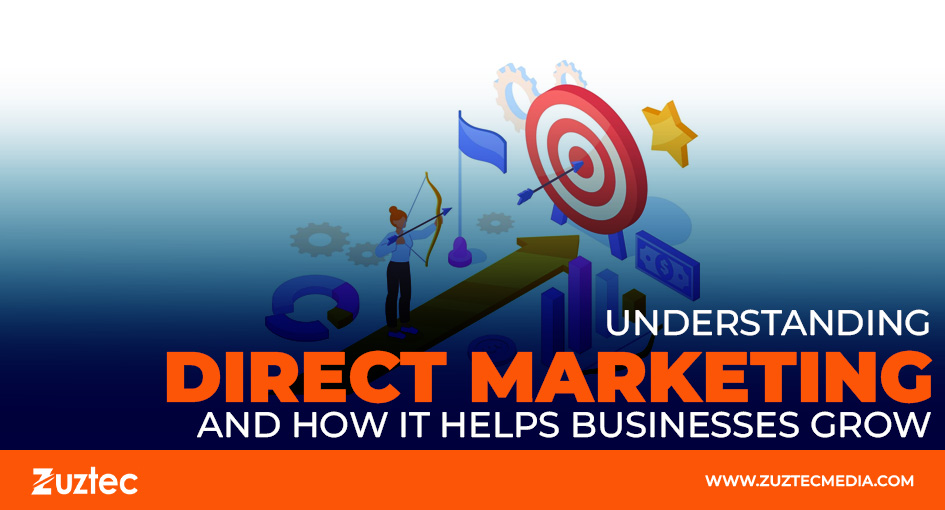
Understanding Direct Marketing and How It Helps Businesses Grow
One of the best ways for businesses to connect with their clients is through marketing. This marketing concentrates on getting messages directly to people, as opposed to traditional advertising, which aims to reach a large audience. Whether it’s through email, SMS, phone calls, or physical mail, the goal is to reach potential buyers directly and encourage a response, such as making a purchase, signing up for a newsletter, or clicking a link.
With this strategy, businesses may establish enduring, tailored connections with their target audience. Small and medium-sized enterprises that wish to optimize their return on investment without shelling out a lot of cash for radio or television advertisements may find it particularly helpful. It increases the effectiveness and personalization of communication by utilizing client data and unambiguous calls to action.
Today, with digital tools and platforms widely available, it has become more advanced and data-driven. Marketers can segment their audience, send tailored messages, and track engagement in real time. Email marketing, for example, remains a powerful form of marketing because of its low cost and high ROI. Similarly, social media messaging, chatbots, and SMS campaigns are helping brands connect with their customers in new and immediate ways.
In this article, we’ll break down what direct marketing is, explore its most common channels, discuss its benefits and challenges, and explain how businesses can use it to grow. Whether you’re new to marketing or looking to improve your current strategy, this guide will give you a clear understanding of how marketing works.
What Is Direct Marketing?
It is a type of advertising in which companies speak with their target market directly rather than through billboards or television. Promoting a good, service, or offer and eliciting a quick response are the goals. These responses can include phone calls, clicks, sign-ups, purchases, or inquiries.
This strategy uses various communication channels, such as emails, text messages, direct mail, and phone calls. It is measurable, targeted, and often personalized, which makes it different from broader forms of marketing. The ability to track reactions and make real-time campaign adjustments is one of the main benefits of marketing for firms.
Types of Direct Market Strategy Channels
It can be carried out through several channels, depending on the target audience and the nature of the message. Here are some of the most popular ones:
- SMS marketing: With high open rates and fast delivery, SMS is effective for urgent updates and special offers.
- Direct mail: Sending physical letters, brochures, or catalogs to customers can still be effective, especially for local campaigns.
- Telemarketing: Calling potential customers to introduce a product or gather feedback. It works best for high-value products or services.
- Social media messaging: Platforms like Facebook and Instagram allow businesses to send direct messages to followers, often with targeted offers.
Advantages of Direct Marketing
It offers several benefits, especially for businesses looking to get quick and measurable results. Here are some key advantages:
- Cost-efficiency: Compared to mass advertising, it often costs less and delivers a better return on investment.
- Immediate results: You can track how many people opened an email, clicked a link, or responded to an offer, allowing for real-time improvements.
- Customer relationships: Regular, direct contact helps build trust and loyalty over time.
- Targeting: By using customer data, businesses can focus their marketing efforts on people who are most likely to buy.
Challenges of Direct Market Strategy
- Privacy concerns: Customers may not appreciate receiving unwanted messages. Compliance with privacy laws like GDPR is essential.
- Message fatigue: If overused, direct market strategy can annoy users and lead to unsubscribes or complaints.
- Limited reach: Unlike mass media, direct market strategy often focuses on smaller, segmented audiences. This can limit brand exposure.
Overcoming these challenges requires careful planning, thoughtful message creation, and proper data management.
However, direct marketing remains a powerful strategy for businesses that want to connect with their audience in a personal and results-driven way. By focusing on specific customer groups, using the right channels, and crafting clear calls to action, companies can achieve meaningful engagement and drive conversions. While it requires attention to detail and ongoing testing, the payoff is often worth the effort. With a good strategy, strong messaging, and proper use of data, this marketing can help businesses grow efficiently in a competitive marketplace.

